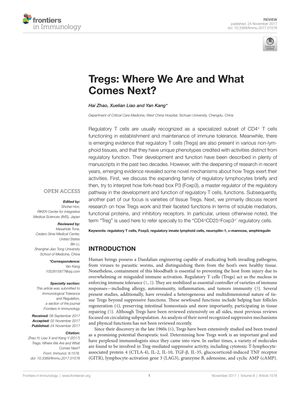Tregs: Where We Are and What Comes Next?
November 2017
in “
Frontiers in Immunology
”

TLDR The conclusion is that Treg-targeted therapies have potential, but more knowledge of Treg biology is needed for effective treatments, including for cancer.
The document from 2017 reviews the role of regulatory T cells (Tregs) in maintaining immune homeostasis and their involvement in various tissues and diseases. It emphasizes the importance of the transcription factor Foxp3 and epigenetic changes in Treg development and function. Tregs are implicated in metabolic regulation in visceral adipose tissue, muscle repair, and maintaining intestinal homeostasis. The review also discusses Tregs' role in tissue repair through amphiregulin expression, their heterogeneity, and their potential as therapeutic targets in cancer due to their ability to promote tumor growth through immune escape. The document highlights the significance of molecules like Neuropilin-1, D-mannose, interleukin-34 (IL-34), interleukin-35 (IL-35), CD39, CD73, CTLA-4, PD-1, TIGIT, LAG-3, and Tim-3 in Treg function and their potential as therapeutic targets. It concludes that while there is a promising potential for Treg-targeted therapies, a deeper understanding of Treg biology is necessary for effective disease treatment, including cancer immunotherapy.





